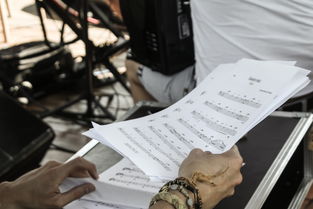In today's digital age, where information transcends linguistic barriers, it becomes increasingly important for content creators to understand and cater to diverse audiences. As a Vietnamese-speaking reader, you might have come across the term "phân số" in Vietnamese, which directly translates to fractions in English. In this blog post, we will delve into how fractions are expressed in Italian, providing you with a unique insight into the mathematical language of Italy. This exploration not only enriches your understanding of numerical expressions but also gives you a glimpse into the educational system and everyday life in Italian-speaking regions.
Understanding Fractions in Italian
Fractions in Italian, like in many other languages, represent parts of a whole, whether it's in a mathematical equation or in colloquial speech. For instance, when you talk about dividing a cake among friends, you're likely dealing with fractions. The basic components of a fraction are the numerator (top number) and the denominator (bottom number). In Italian, these terms are referred to as "numeratore" and "denominatore," respectively.
Basic Structure and Usage
When writing out fractions, Italians follow a straightforward structure that can be easily understood once broken down:
Simple Fractions: To write a simple fraction in Italian, such as one-third, you would say "un terzo." Here, "un" represents one (the numerator), while "terzo" indicates three (the denominator). This pattern holds true for other simple fractions as well, like "un quarto" (one quarter) or "due quinti" (two fifths).
Complex Fractions: Complex fractions involve numbers greater than one and include mixed numbers. For example, if you need to express 2 and a half, you would say "due e mezzo." Notice the use of "e" (meaning "and") to separate the whole number from the fractional part.
Decimal Fractions: When expressing decimal fractions, the approach is similar to English, but with a few nuances. Instead of saying "point," Italians use "virgola" to denote the decimal point. Thus, 0.75 would be read as "zero virgola settantaquattro" (zero point seventy-four).
Everyday Use of Fractions in Italian
Understanding fractions isn't just confined to academic or professional settings; they play a significant role in daily conversations and practices as well. Whether you're cooking, measuring ingredients, or discussing time, fractions become indispensable tools for precision and clarity. Let’s look at some common contexts where fractions are used in Italian:
Cooking: Recipes often require precise measurements. If a recipe calls for half a cup of milk, you'd express it as "mezza tazza di latte."

Measurement: In construction or DIY projects, measurements like "un metro e tre quarti" (one meter and three quarters) are commonly encountered.
Time: Telling time also involves fractions. For instance, half past four is "le tre e mezza," reflecting the importance of fractions even in casual discussions.
Cultural Insights through Fractions
Exploring how fractions are integrated into the fabric of daily life in Italian culture can offer profound insights into their values and lifestyles. The precision required in culinary arts, for example, underscores the importance of tradition and craftsmanship in Italian cuisine. Similarly, the meticulousness involved in measurements during construction reflects the deep-rooted respect for architecture and design in Italian society.
Conclusion
Navigating the world of fractions in Italian opens up a new perspective on the language's intricacies and its practical applications in various aspects of life. From mathematical equations to everyday scenarios, fractions serve as bridges connecting different dimensions of communication. By understanding these expressions, not only do you enhance your language skills, but you also gain a deeper appreciation for the rich tapestry of Italian culture and society. So next time you encounter a fraction in Italian, remember that it's more than just a number—it's a doorway into a broader understanding of Italy's diverse landscape.
Now let's translate the provided title and content into Vietnamese, focusing specifically on Italian fractions.
Title: Phân số trong Tiếng Ý: Một Khám Phá về Biểu Diễn của Phân Số và Các Biểu Thức Toán Học trong Tiếng Ý
Trong kỷ nguyên kỹ thuật số ngày nay, nơi thông tin vượt qua rào cản ngôn ngữ, trở nên quan trọng hơn bao giờ hết khi các tác giả nội dung phải hiểu và đáp ứng nhu cầu đa dạng của người đọc. Là một độc giả nói tiếng Việt, bạn có thể đã gặp thuật ngữ "phân số" trong tiếng Việt, vốn trực tiếp dịch ra tiếng Anh là "fractions". Trong bài viết này, chúng ta sẽ đi sâu vào việc phân số được biểu diễn như thế nào trong tiếng Ý, mang lại cho bạn cái nhìn độc đáo về ngôn ngữ toán học của nước Ý. Việc khám phá này không chỉ làm phong phú kiến thức về các biểu thức số học của bạn mà còn đưa bạn vào một khía cạnh khác về giáo dục và cuộc sống hàng ngày ở các khu vực nói tiếng Ý.
Hiểu Fractions trong Tiếng Ý
Phân số trong tiếng Ý, giống như nhiều ngôn ngữ khác, đại diện cho phần của một toàn bộ, bất kể đó là trong một phương trình toán học hay trong ngôn ngữ thường nhật. Ví dụ, khi bạn nói về việc chia một bánh mì giữa bạn bè, bạn đang làm việc với phân số. Các thành phần cơ bản của một phân số là tử số (số phía trên) và mẫu số (số phía dưới). Trong tiếng Ý, những từ này được gọi là "numeratore" và "denominatore," tương ứng.
Cấu trúc Cơ Bản và Sử dụng
Khi viết ra các phân số, người Ý tuân theo cấu trúc đơn giản có thể dễ dàng hiểu được khi đã được giải thích rõ:
Phân số đơn giản: Để viết một phân số đơn giản bằng tiếng Ý, ví dụ như một phần ba, bạn sẽ nói "un terzo." Ở đây, "un" đại diện cho một (tử số), trong khi "terzo" chỉ ba (mẫu số). Mô hình này cũng đúng cho các phân số đơn giản khác, như "un quarto" (một phần tư) hoặc "due quinti" (hai phần năm).
Phân số phức tạp: Phân số phức tạp bao gồm các số lớn hơn một và bao gồm cả số hỗn hợp. Ví dụ, nếu bạn cần diễn đạt hai và một nửa, bạn sẽ nói "due e mezzo." Chú ý đến việc sử dụng "e" (có nghĩa là "và") để phân cách số nguyên từ phần phân số.
Phân số thập phân: Khi diễn đạt phân số thập phân, cách tiếp cận là tương tự như tiếng Anh, nhưng với một số điểm nhấn riêng. Thay vì nói "điểm", người Ý dùng "virgola" để chỉ dấu phẩy thập phân. Do đó, 0,75 sẽ được đọc là "zero virgola settantaquattro" (không, bảy mươi bốn phần trăm).
Sử dụng Phân Số Hàng Ngày trong Tiếng Ý
Hiểu về phân số không chỉ bị giới hạn ở các bối cảnh học thuật hay chuyên nghiệp; chúng đóng một vai trò quan trọng trong các cuộc trò chuyện và thực hành hàng ngày. Dù bạn đang nấu ăn, đo lường nguyên liệu, hay thảo luận về thời gian, phân số trở thành công cụ không thể thiếu cho sự chính xác và rõ ràng. Hãy xem xét một số bối cảnh phổ biến nơi mà phân số được sử dụng trong tiếng Ý:
Nấu ăn: Công thức thường yêu cầu độ chính xác về mặt đo lường. Nếu một công thức đòi hỏi nửa cốc sữa, bạn sẽ diễn đạt điều đó là "mezza tazza di latte."
Đo lường: Trong xây dựng hoặc dự án DIY, các đo lường như "un metro e tre quarti" (một mét và ba phần tư) thường được gặp.
Thời gian: Việc nói thời gian cũng liên quan đến phân số. Ví dụ, nửa giờ sau bốn sẽ là "le tre e mezza," phản ánh tầm quan trọng của phân số ngay cả trong các cuộc trò chuyện thông thường.
Những Ý Nghĩa Văn Hóa thông qua Phân Số
Khám phá cách phân số được tích hợp vào nền văn hóa Ý có thể mang lại những hiểu biết sâu sắc về giá trị và lối sống của họ. Sự chính xác cần thiết trong nghệ thuật ẩm thực, ví dụ, nhấn mạnh tầm quan trọng của truyền thống và kỹ năng trong ẩm thực Ý. Tương tự, độ chính xác trong đo lường trong quá trình xây dựng phản ánh sự tôn trọng sâu sắc đối với kiến trúc và thiết kế trong xã hội Ý.
Kết luận
Chinh phục thế giới của phân số trong tiếng Ý mở ra một góc nhìn mới về những phức tạp của ngôn ngữ và các ứng dụng thực tế của nó trong các khía cạnh khác nhau của cuộc sống. Từ các phương trình toán học đến các tình huống hàng ngày, phân số phục vụ như là những cây cầu kết nối các lĩnh vực khác nhau của giao tiếp








